If you want to know about the climate and elements of climate or site climate or climatic zones in India, please click the link.
Climate-responsive architecture refers to the design of buildings and structures that take into account the local climate and environment in order to provide a comfortable and sustainable living and working environment for its occupants. This approach seeks to reduce the negative impact of buildings on the environment and to create structures that are energy-efficient, environmentally friendly, and resilient to the changing climate.
1) Climate
Climate is the long-term prevailing conditions at a particular place taken over time and based on records taken.

- Includes average temperature and precipitation over time.
2) Weather
- Weather is the current atmospheric conditions at a given time.
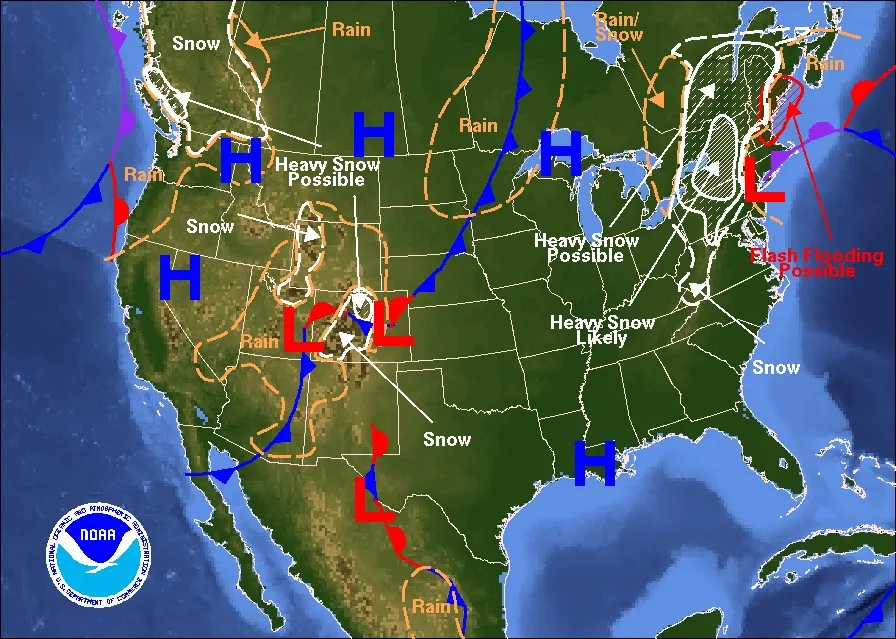
3) Microclimate
- A local atmospheric zone where the climate differs from the surrounding area is known as a microclimate.
- A microclimate exists inside the bird of paradise flower. The temperature is very different on the inside compared to the outside of the flower.

The term may refer to areas as small as a few square feet or as large as many square miles.
- Gardens
- Valleys

4) Factors affecting Microclimate of atmosphere
i) Effect of Local Terrain (Flat site experience little variation)
- Surrounding slopes have important effects on air movement, especially at the bottom of a hollow.

- In hollows air warmed by the rises upwards due to buoyancy effects (anabatic flow), to be replaced by cooler air drifting down the slope (katabatic flow).
- The result is that valley floors are significantly colder than location’s part way up the slope
ii) The effect of buildings (Open spaces and Built form)
- Absorptive surfaces and smaller open spaces radiate less heat to buildings around.

- Greater the exposure of the walls and ground to the sky, the more the heat loss.

- Sometimes wind speed can increase if it rushes around buildings. Here, it would be cooler.
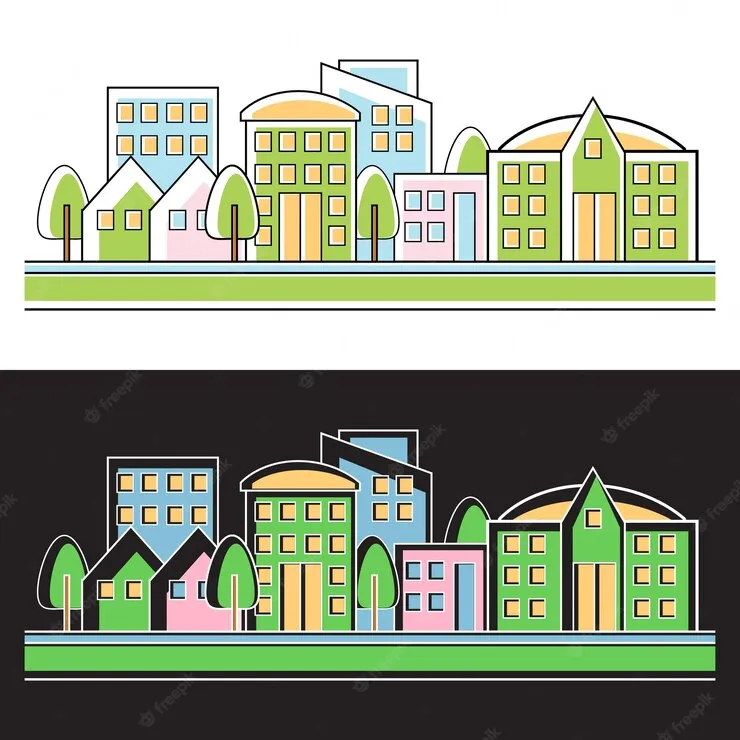
- Buildings store heat and give it out in the afternoon. Buildings close together can break up winds. It would be warmer, especially in the afternoon.
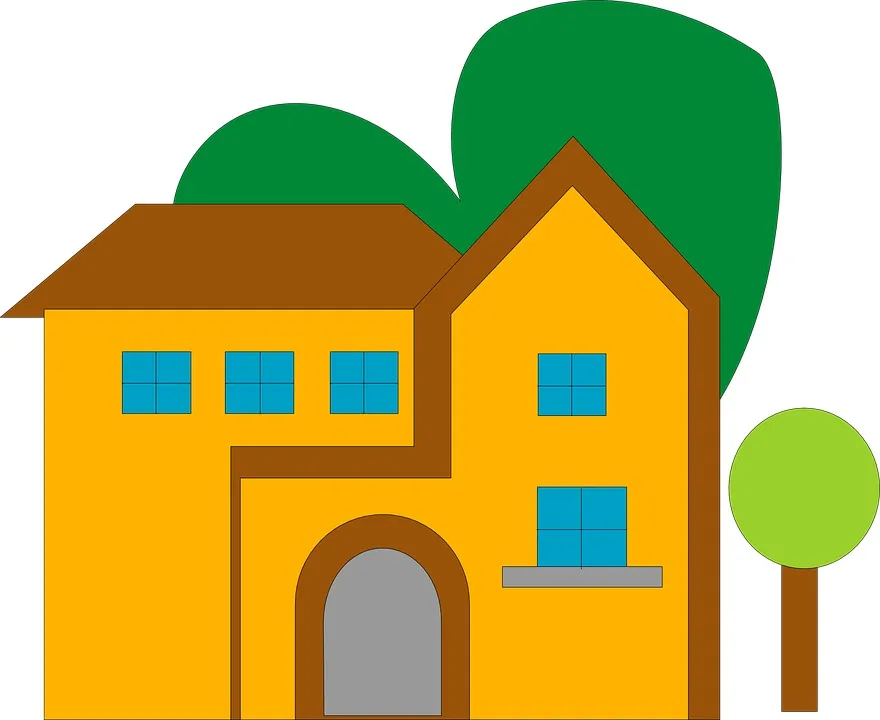
- Compact planning in the modern context: large heat production of modern buildings makes compact planning inappropriate in hot regions due to the decrease in heat loss capacity.
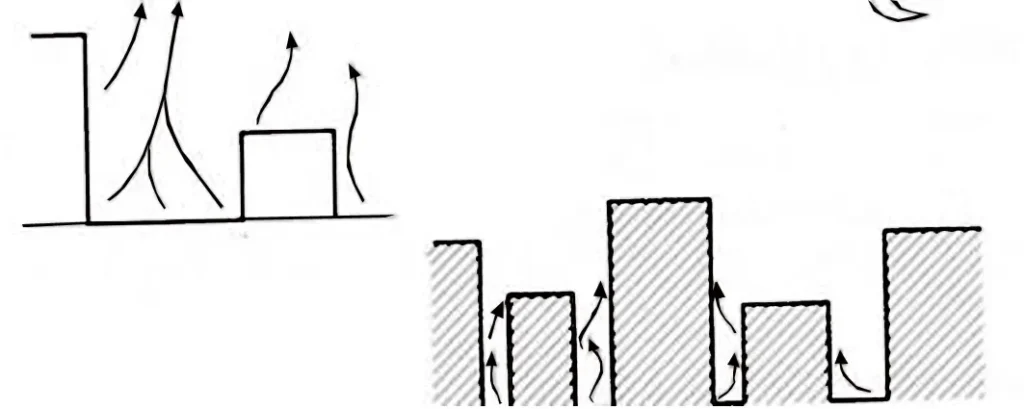
- Compact planning in cold climates: While gain is reduced by compact planning, the decrease in heat loss is significant.
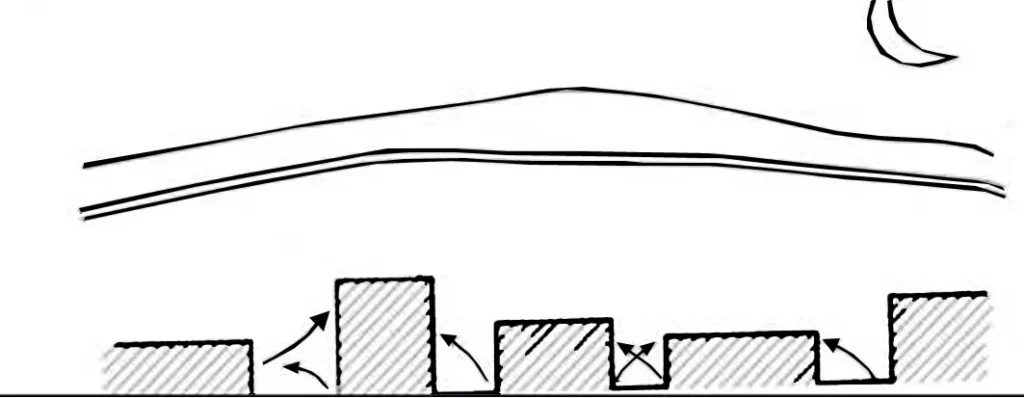
5) Improving microclimate through design
i) The aims of enhancing Micro-Climate around Buildings
- Reduce costs of winter heating
- Reduce summer overheating and the need for cooling
- Maximize outdoor comfort in summer and winter
- Improve durability of building material (reduced rain penetration)
- Provide a better visual environment in spaces around buildings
- Encourage growth of plants
- Discourage growth of mosses and algae
- Facilitate open air drying of clothes
6) Means of enhancing the microclimate around a building include….
i) Solar Access
- Allow maximum daylight into space and buildings
- Allow maximum solar radiation into space and buildings
- Shade space and windows from prolonged exposure to summer sun
- Protect space and windows from glare
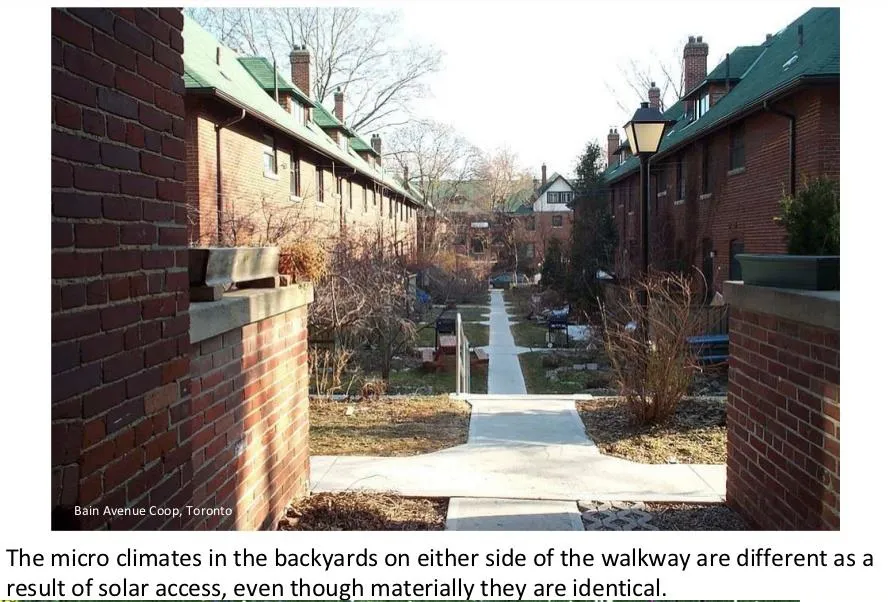
ii) Wind Protection
- Protect space and buildings from prevailing winds and cold (e.g., North/East) winds.
- Prevent buildings and terrain features from generating turbulence
- Protect spaces and buildings from driving rain and snow
- Protect space and buildings from katabatic flows, while retaining enough air movement to disperse pollutants
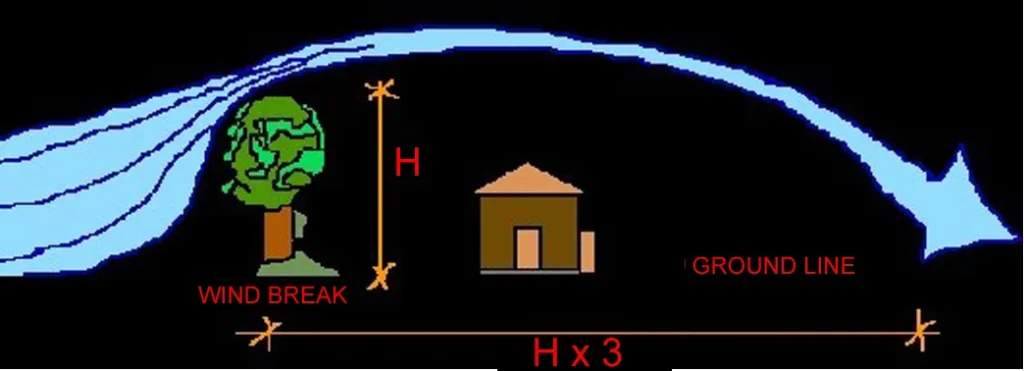
iii) Features
- Provide thermal mass to moderate extreme temperatures
- Use vegetation for sun shading and wind protection (transpiration helps moderate high temperatures).
- Provide surfaces that drain readily.
- Provide water for cooling be evaporation (pools and fountains)

iv) Vegetation
- Sun side of the hedge faces the sun. It would be warmer.
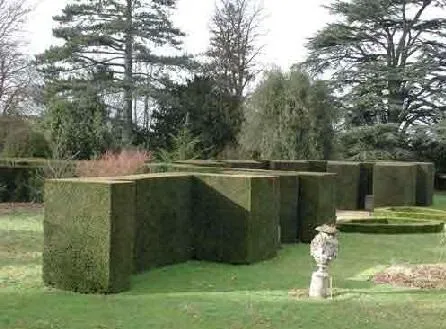
- Other side of the hedge is in shade. It would be cooler.
v) Water bodies
- Water areas like lakes have a cooling effect on the land.
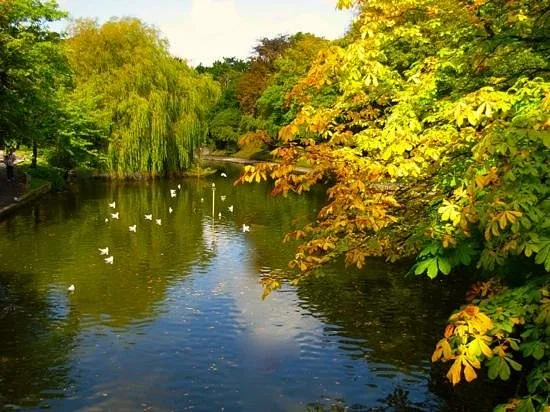
7) Factors affecting microclimate
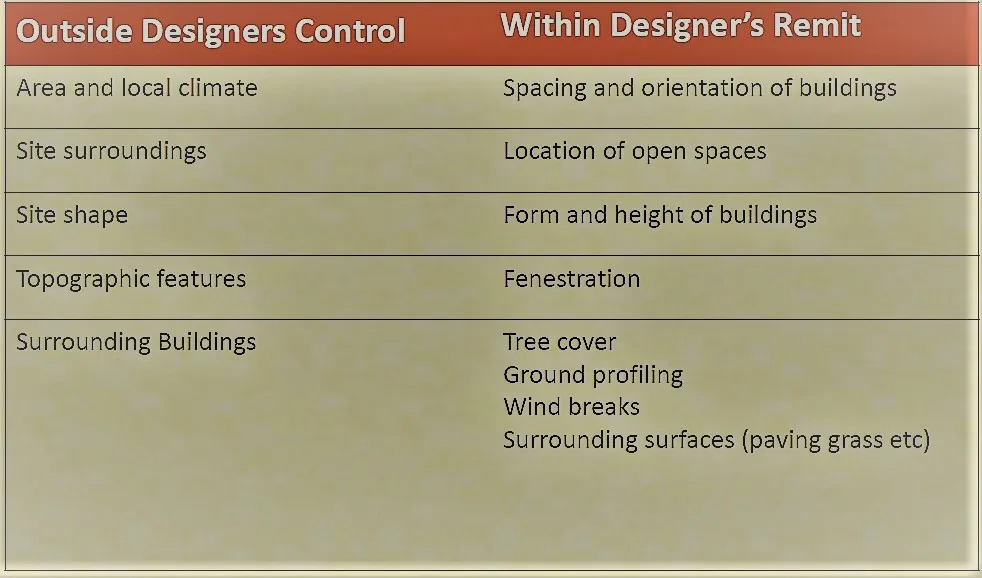
8) Two main possibilities for influencing Microclimate are Solar Access and Wind Control
i) Solar Access
- Solar access to a site is often a case of minimizing solar overheating in summer while maximizing solar access during the winter.
- Buildings with a heating requirement should be orientated north south with maximum glazing on the south face.
- Deciduous trees offer an excellent means of site shading, with shading being reduced in winter when the trees lose their leaves.
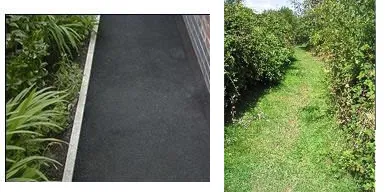
- Use of courtyards and water can also moderate the effects of high temperatures on summer.
- The colour of surrounding surfaces will have a pronounced effect on the solar radiation available to the building.
- Light coloured paving will increase the radiation reflected from the ground into the building. Paving stones will also provide external thermal mass, moderating temperature swings immediately adjacent to the building.
Dark surfaces such as tarmac store heat. It would be warmer
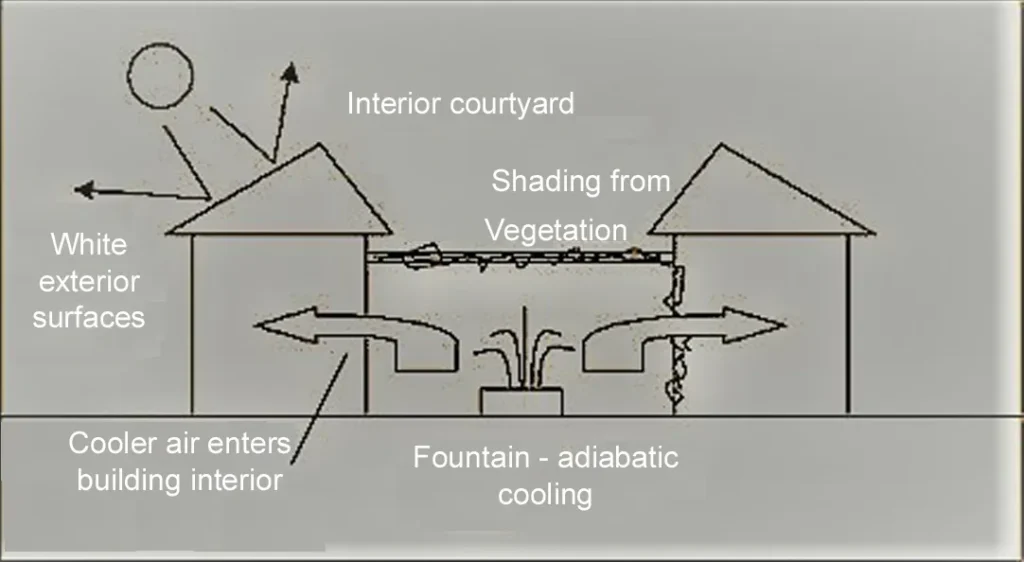
Light surfaces such as grass reflect heat. It would be cooler
ii) Wind Protection
The form of the building can have a great effect on the impact of the wind
- Avoidance of the building flank facing the wind
- Avoidance of funnel-like gaps between buildings
- Avoidance of flat roofed buildings and cubical forms
- Avoid piercing buildings at ground level
- Avoid abrupt changes in building heights
- Orientate long axis of the building parallel to the direction of the wind
- Use podium to limit down draught at ground level
- Use pitched rather than flat roofs and stepped forms for higher buildings
- Groups of buildings can be arranged in irregular patterns to avoid wind tunneling.
- Coniferous trees and fencing and other landscape features such as mounds of earth and hedges can also reduce the impact of wind and driving rain on the building structure Wind Protection
Overall, the goal of climate-responsive architecture is to create structures that work with, rather than against, the natural environment. By designing buildings that are sustainable and energy-efficient, we can reduce our impact on the environment while also creating healthier and more comfortable living and working spaces.